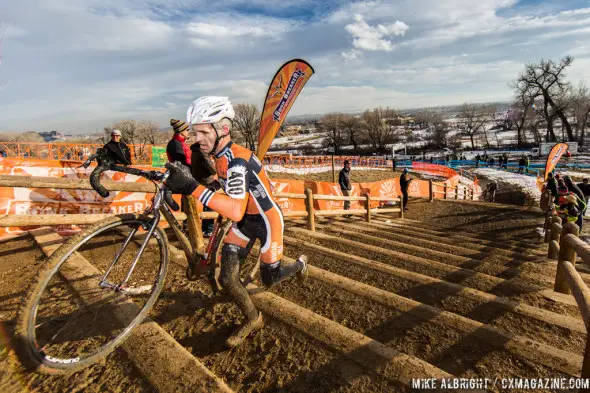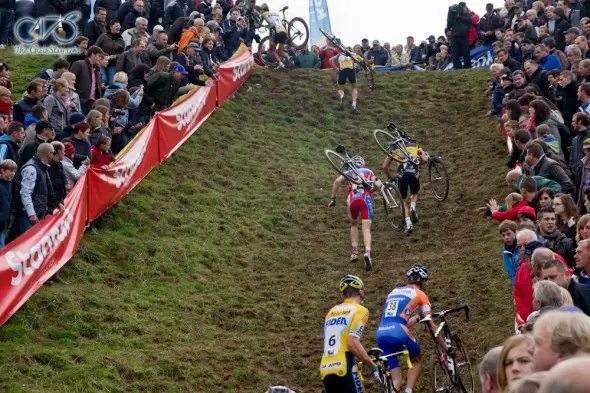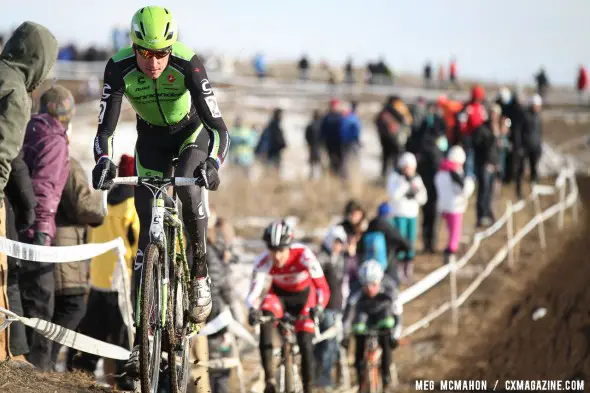
Ryan Trebon leads the group up one of the first hills on the 2013 Cyclocross National Championship course.© Meg McMahon
For today’s Technique Tuesday, we will revisit a frequently asked question from our Cyclocross 101 readers. The question, what obstacles can I expect to see on a cyclocross course, is difficult to answer because of all the different signatures a designer can place into his or her course. Due to regulations imposed from different cycling bodies, there are some limitations; although if you’re hopping on dirty mattresses while running through a rusty school bus, you are likely at an unsanctioned race.
In most cyclocross races, however, you will likely find yourself running with your bike or cornering (or maybe even running through a corner). As such today’s article will act as a good segway into our future posts: training for running in cyclocross, and finding the perfect lines. Make sure you stay tuned for all your training and technique needs!
The inclusion of obstacles and varied terrain help set ’cross apart from the other bike racing disciplines. Beneath it all, ’cross is a bike race, but specific features can really give some personality to a particular course. USAC rulings limit barriers to 40cm high and 4-6m apart, with no more than two in succession. Unsanctioned events typically use those rules as a guideline, then create their own ‘illegal’ features.
In nearly any course, you’ll come across the barrier (wooden plank) section. In most cases, this describes a part of the course that has a set of two (or sometimes three or four) vertical boards running horizontally across the course. Racers must either dismount and lift their bikes up and over these barriers, bunny-hop them, or try a combination of both:
But just because the official rules mandate a plank of a certain height and spacing, doesn’t mean you won’t come across a giant log (or two) or even a rock wall.
Run-ups are typically hills too steep, sandy or muddy to ride up, forcing racers to dismount, then push, carry or drag their machines up before riding on. Knee-deep peanut butter mud may also be encountered.
Depending on your geographical location, big tree roots might be a part of the course, as could sand pits or sandy beach sections. For some of us, though, a volleyball court might be the closest we’ll ever get to a beach.
Stairs and flyovers are other common man-made features. Stairs may be built into the side of a hill as a way of forcing riders to dismount and break up the race a bit. Exceptional bike handlers may attempt to just ride them.
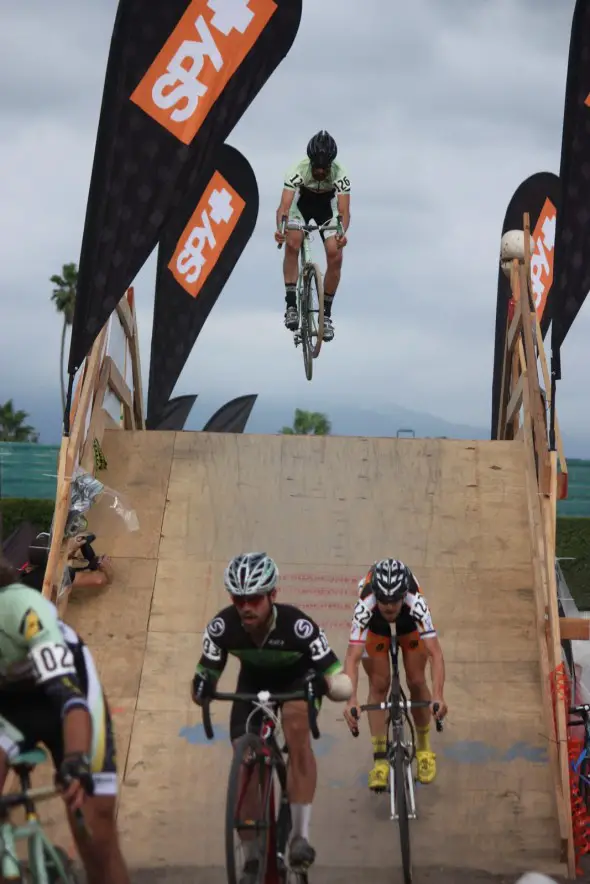
Scott Chapin launching the flyover during Spooky Cross Day 2. October 2012. © Michael Wagner/ CLR Effect
Flyovers can seem daunting at first, but break them down into separate sections and you’ve got stairs to run up, and a quick remount followed by a short steep descent. Aside from the fun-factor, flyovers have practical use allowing a course to cross back on itself like a figure eight, which is useful in limited space.
Sometimes, a beer garden could be classified as a barrier. If you’re intimidated by loud noises, then you might have to brace yourself. Grabbing a beer or dollar hand-up might cause you to lose precious seconds, or even be disqualified if it’s a USA Cycling event.
Race venues are typically places with easy access and lots of parking such as schools, parks, or fairgrounds. The type of terrain nearby can give an advantage to certain types of rider. For instance, a grass or dirt course that’s relatively flat may favor a road rider, whereas a course with technical sections in the woods with slick roots and big ruts may provide an advantage to mountain bikers.
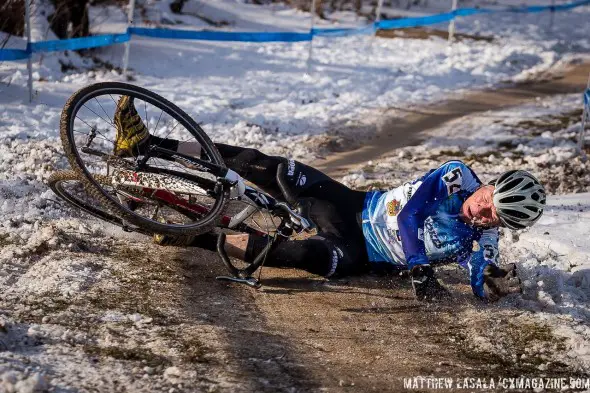
Early morning races mean slick, icy conditions, especially in this corner before the finish. © Matthew Lasala
Most course designers try not to skew their layout one way or the other. With a little creative thinking, even a flatter venue can have some technical bits built in like twisty chicanes or U-turns. On the contrary, the entry to a slick muddy section could be a straight gravel road requiring a big engine to motor through.
Get schooled in cyclocross with our Cyclocross Academy class list here, and make sure you’re subscribed to Cyclocross Magazine, your guide for getting into the sport, and upping your ’cross knowledge. Not subscribed yet? For the newbies, our Issue 21 has a great feature on buying your first cyclocross bike, and Issue 22 has a story on how to get into racing and what to expect at your first race.














